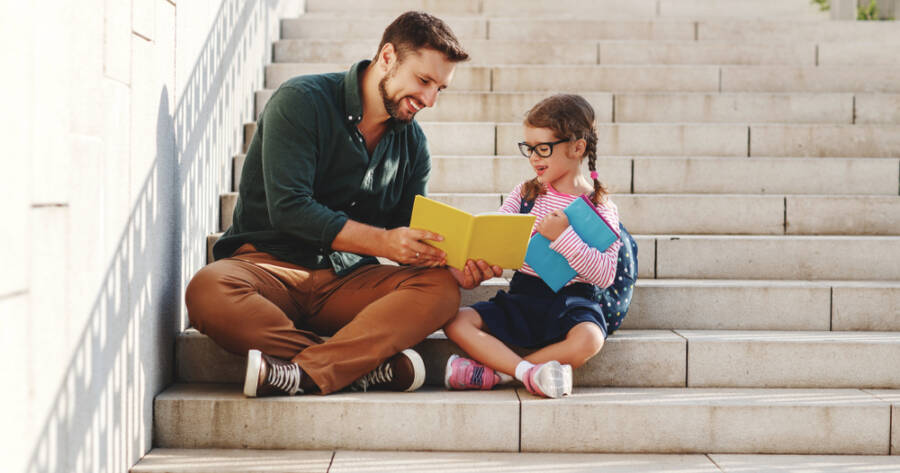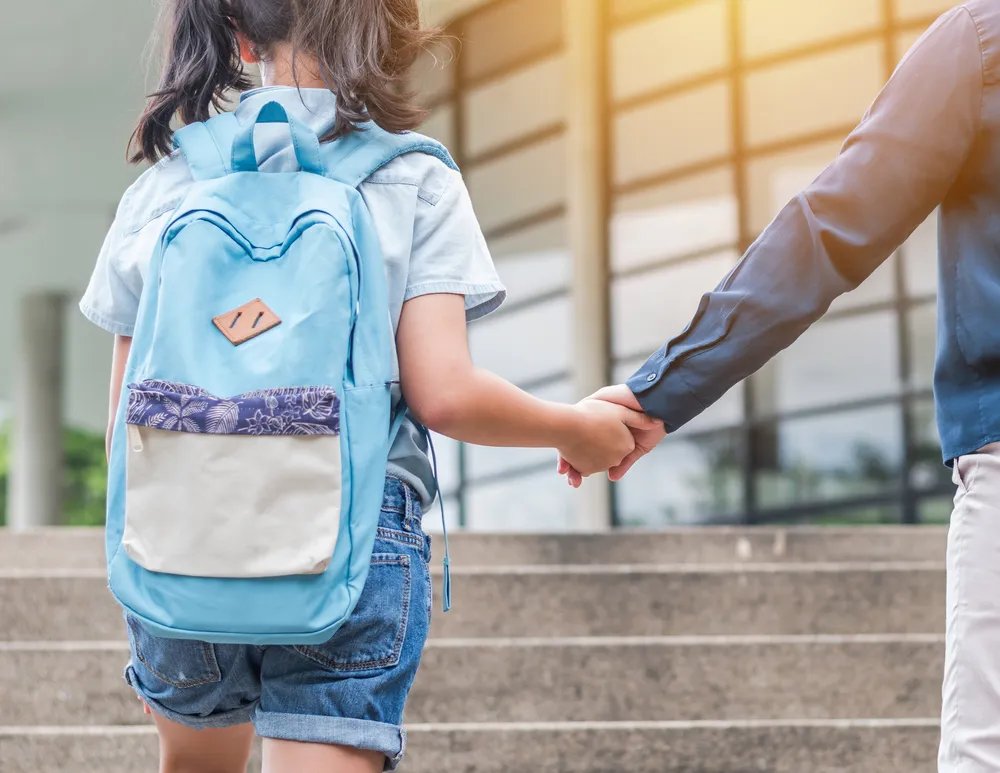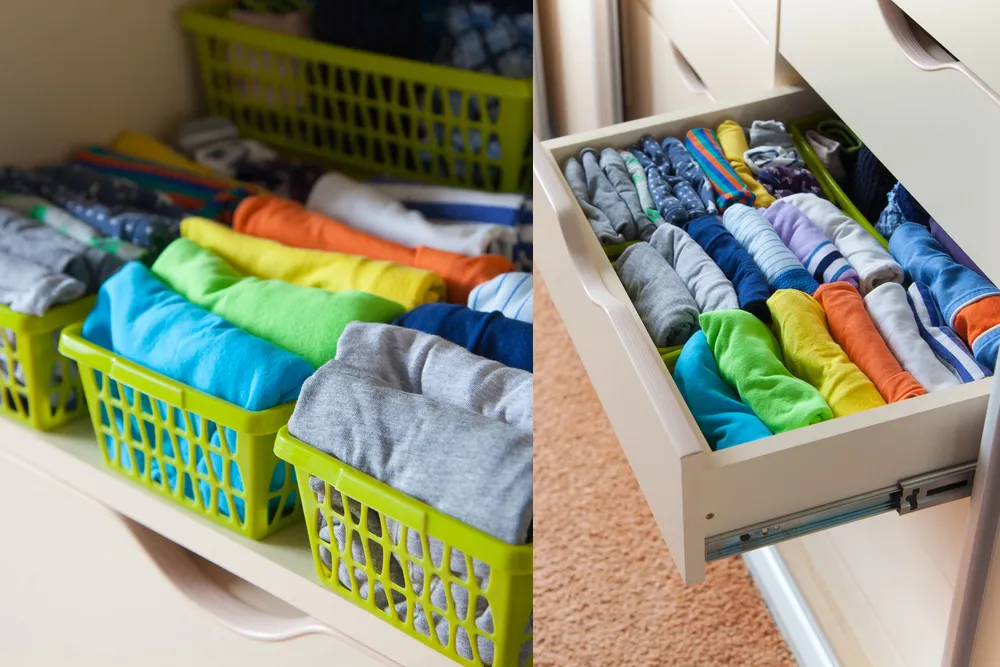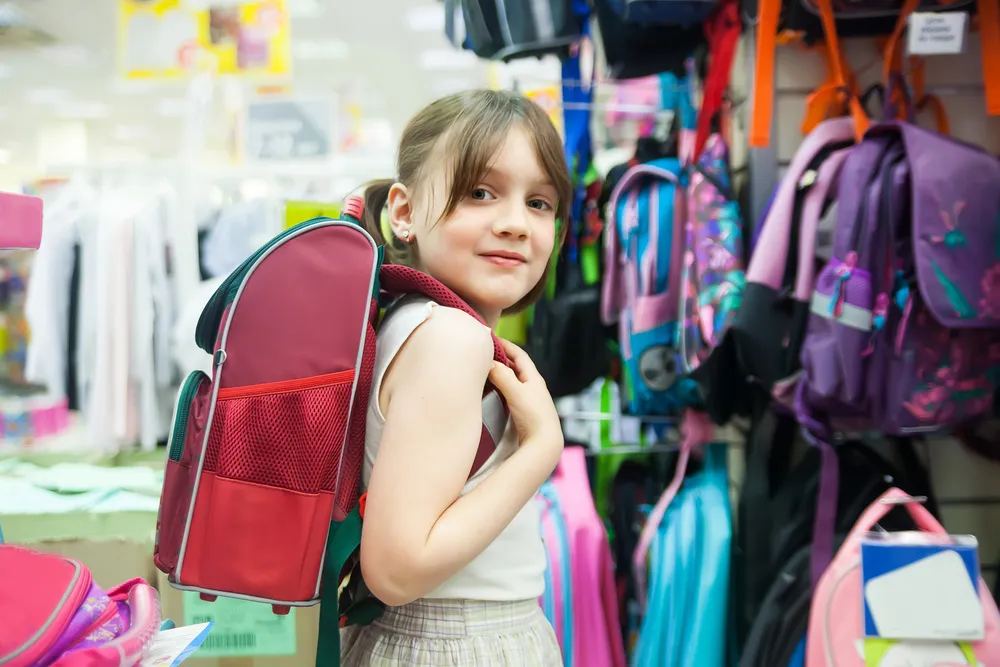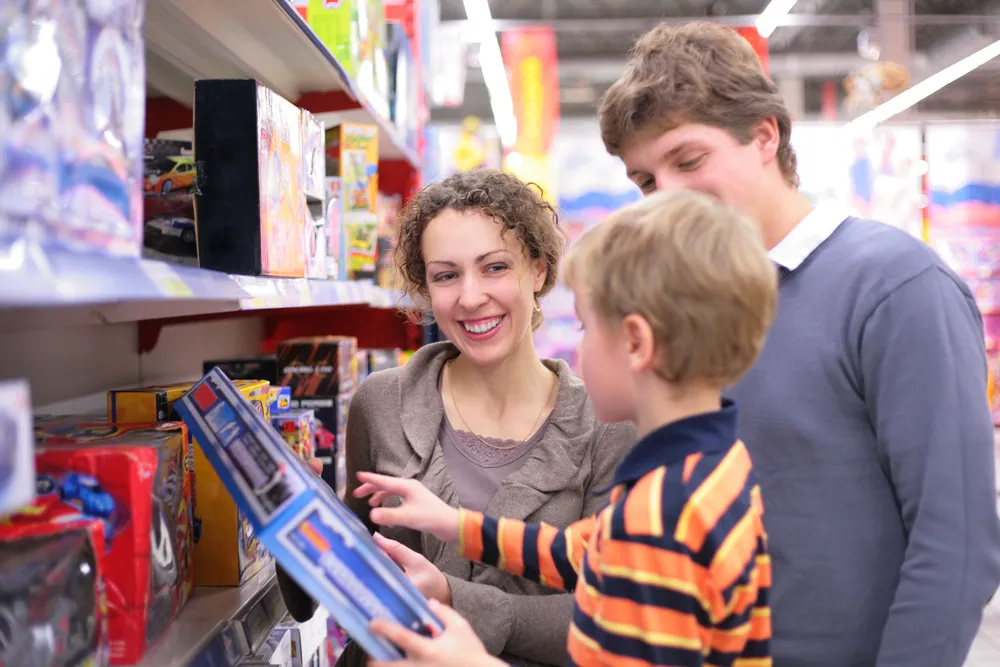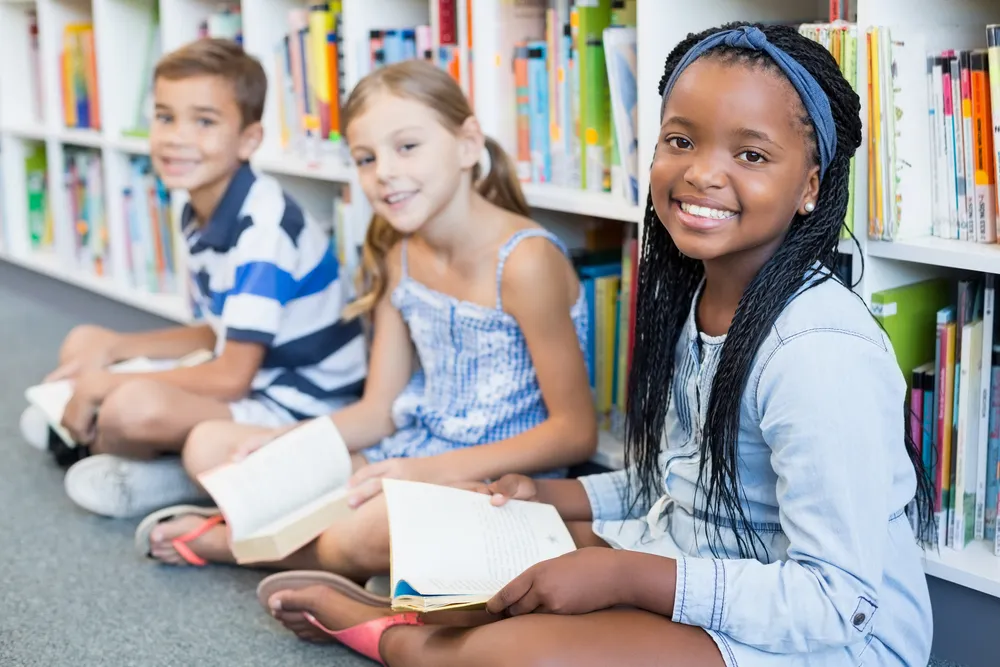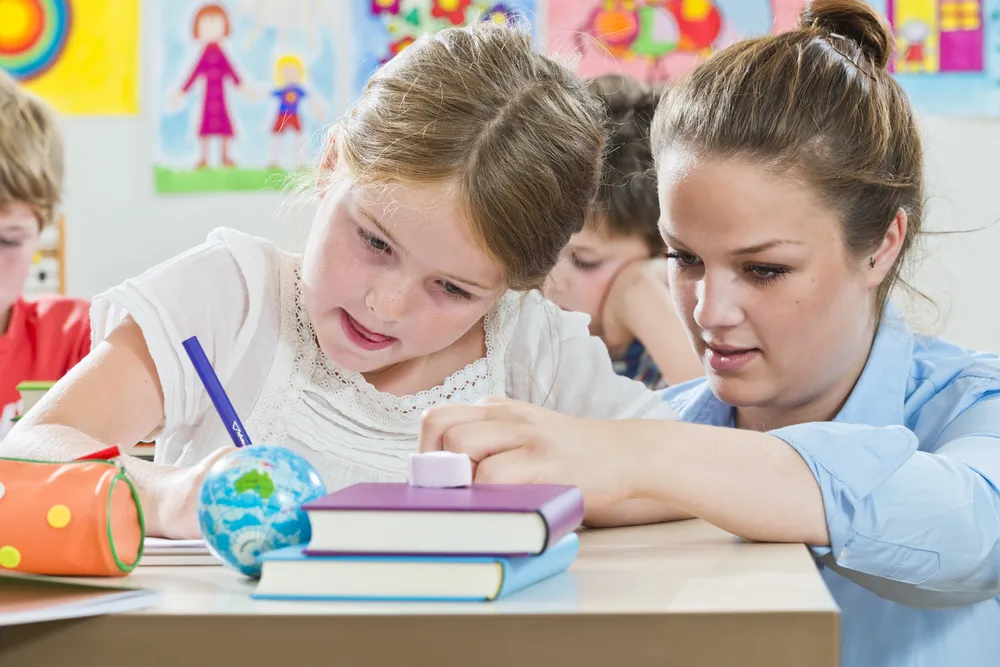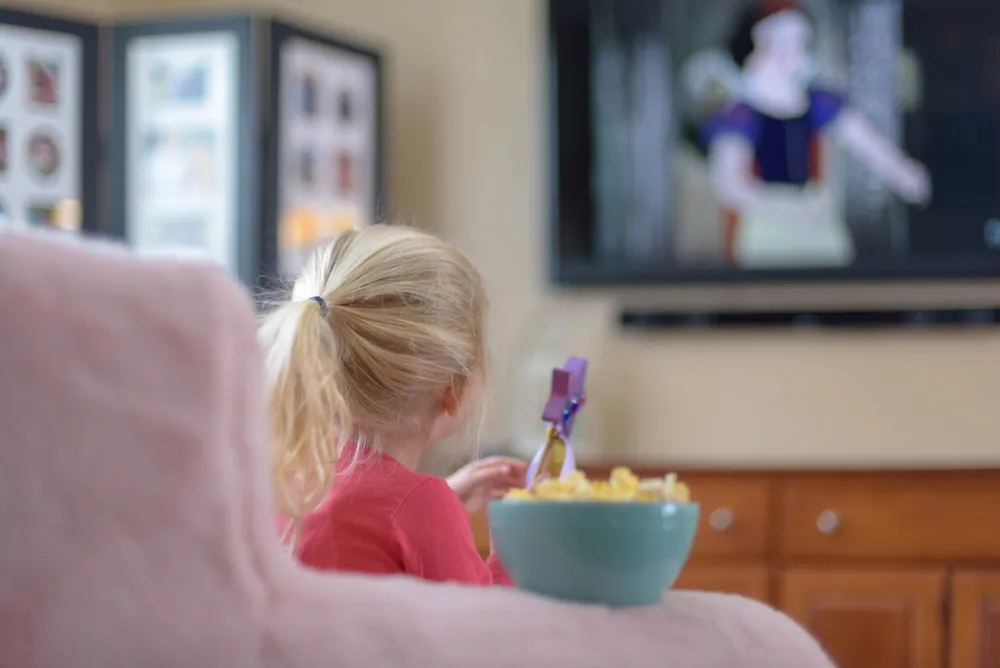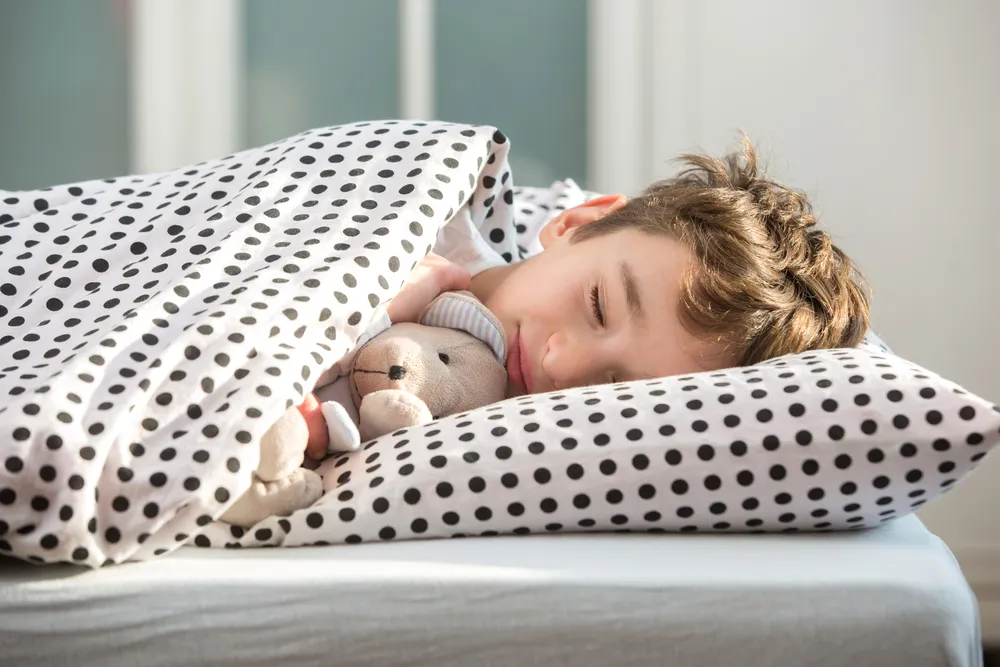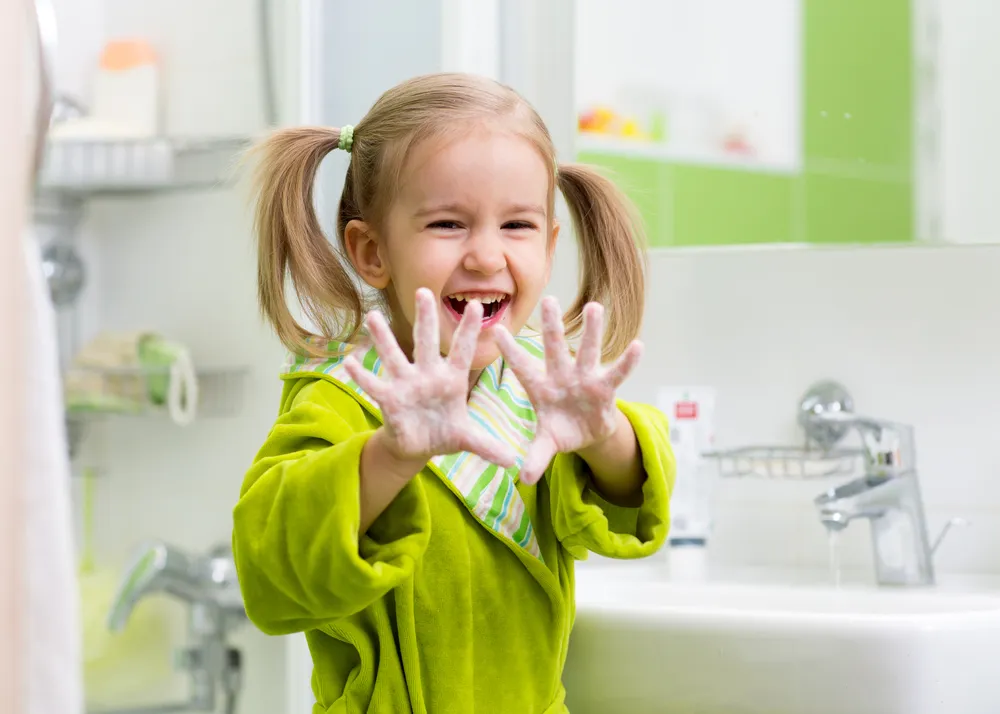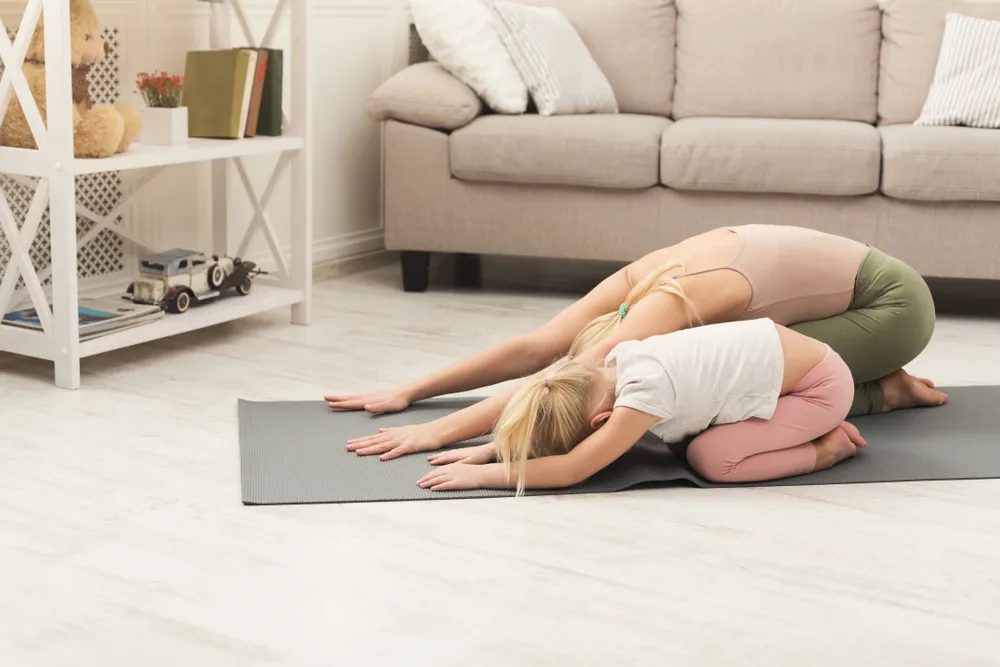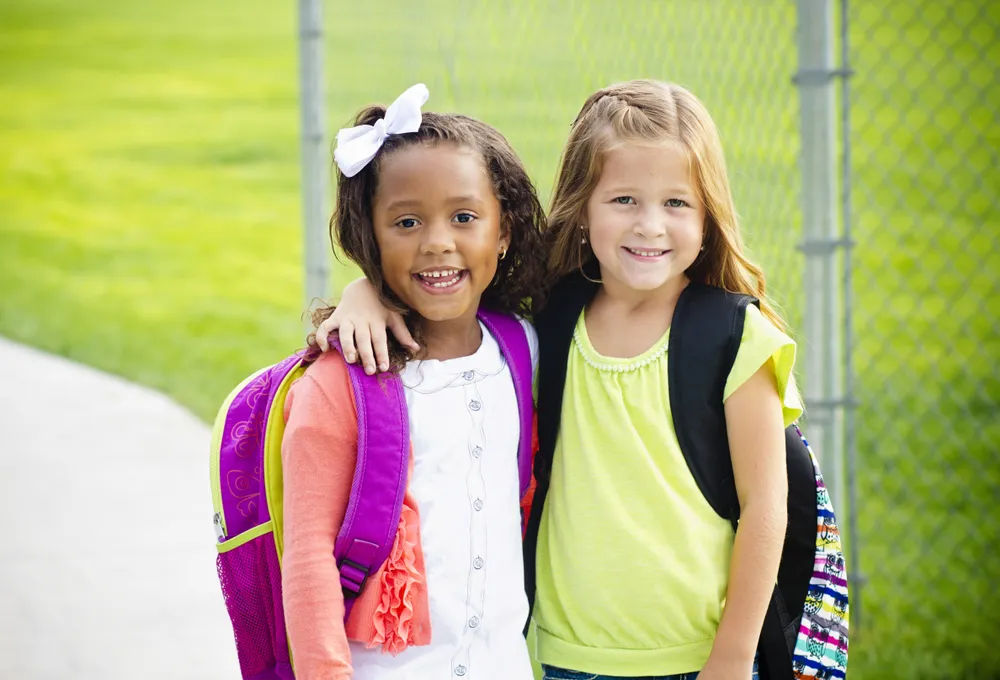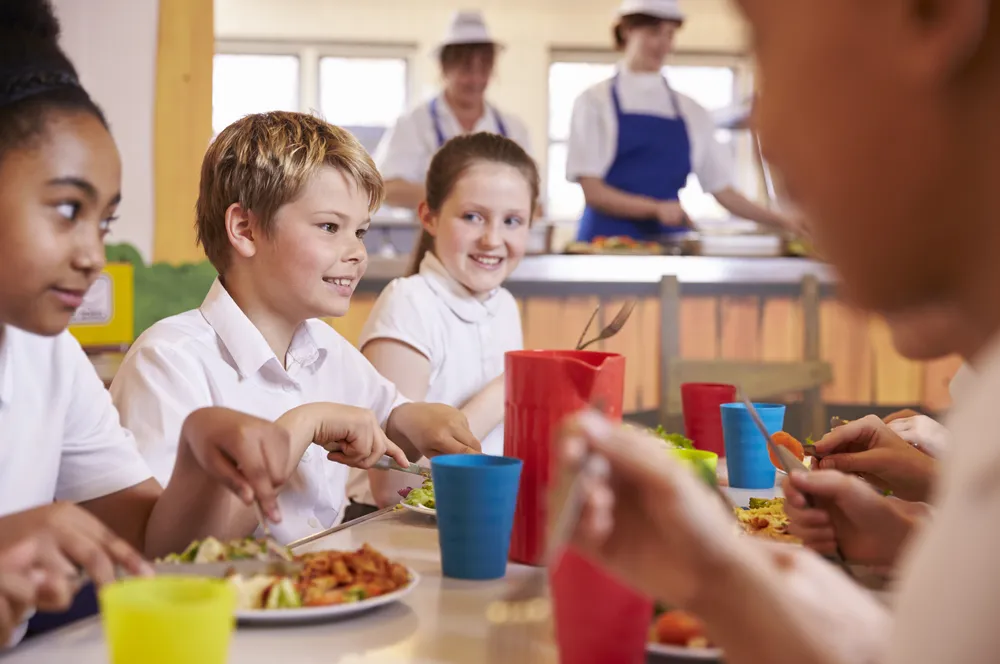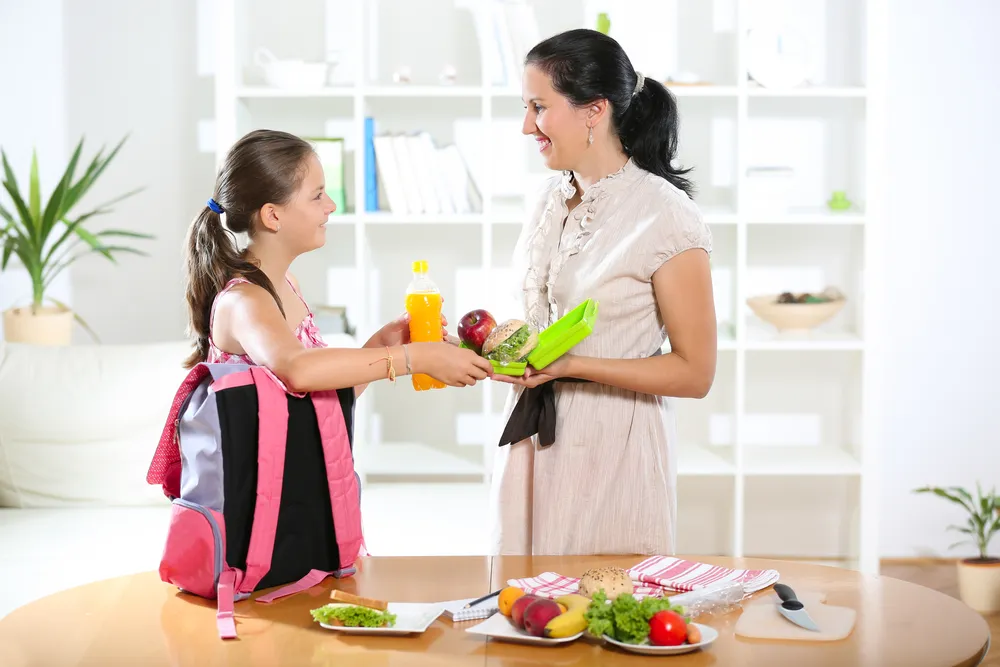Before you know it, the summer will be over, and you’ll notice the latest sales for back-to-school all over those department store windows. There’s no way for us to get around it; whether it’s in a mall or on television, the message will soon be clear: your kiddos are going back to school soon.
But going back to school is about more than just new jeans, the coolest sneakers, and fancy pens – while you prep your lengthy list for the mall, don’t forget to make a separate one that will ensure your child is healthy, happy and emotionally ready to face their first day. And remember, what applies to them, usually applies to you, too. The back to school routine can be as tough for parents as it is for kids.
Some children look forward to the prospect of heading back to class after a long summer to see their friends. However, for some kids, this can be a source of anxiety, especially if it’s their first time going to school.
Here, we’ve put together 14 items that you should address to make your back to school experience with the kids a more pleasant one.
Re-establish Routines
Being successful at school means being able to get proper rest, and that might also mean sleep routines might be adjusted from the summer schedule. WebMD suggests using the last few weeks of blissful summer to get into a “school day rhythm”.
That means your child should get up in time for school, even though the school year hasn’t started yet. You can also get them into the habit of eating a proper breakfast, which is important for mental and physical functions throughout the day, adds the source. Make lunchtime at home match the time they’ll be munching lunch between classes.
Map Out their Year
In some cases, your child will be able to ride the school bus to the learning institution before class starts, to ease any anxiety of the trip or where to catch their ride. As GreatSchools.org points out, many schools host open houses to meet teachers (these days are geared towards parents choosing a school, but they’re often helpful to new students as well).
Open houses can help familiarize a child with the school layout ahead of time, because unknowns of where their classes are can be nerve-wracking for youngsters. Knowing where to find the school office for help, where to store school supplies (i.e. a locker), and where the cafeteria is can put them a step ahead of the game.
Declutter Important Spaces
While Spring cleaning may be more popular, a back-to-school declutter will make the transition from summer months to fall days go more smoothly. Take some time to sort through all the “stuff” in your house – clothes, toys, books, etc. – and create piles to “Keep”, “Donate”, “Sell”, and “Toss”. If your kids are old enough, have them help sort through their own rooms as well.
Less clutter can actually translate to feeling more calm and peaceful, but realistically it also makes way for the inevitable influx of new stuff that will end up in your house in the form of back-to-school shopping, gifts, school projects, and the like once the school year starts.
Organize Your Child’s Closet
After sorting through your child’s closet and getting rid of old, stained, or too-small clothes, it’s time to organize their closet in a way that makes sense for them. This is especially important if they’re just starting to choose outfits or get dressed by themselves for school.
Use open labelled bins or separate drawers they can reach to sort socks, underwear, shirts, layering pieces (sweaters, cardigans, etc.), pants, dresses, pjs, etc. If you still choose their outfits, consider getting some labeled hangers that say the day of the week and then putting out their outfits on Sunday night to make weekday mornings easier. There are so many resources to help you pick the perfect way to organize their closet, so hop on Pinterest to get inspired! Hopefully, this will result in fewer required wardrobe changes at 7:00 AM!
Create a File Box
As part of your decluttering, prepare a file box for the year to help you and your child stay organized. Buy an inexpensive bin from your local office supplies store and make a different colored folder for each school subject and extra-curricular with labeled tabs. You can also choose a more stylish file box so you can have it on display to act as a family “command center” where you can additionally store bills, forms, cards, and more – all with corresponding folders.
This gives kids a place to place graded projects and tests and reference materials as they come home, instead of cluttering up the fridge, their rooms, and the countertops. It’s also a great way to store memories! You can add school photos, homemade art pieces and crafts, and other things you want to keep, and at the end of the school year label the box with the year and store easily in your basement. Creating this organization tool prior to the school year starting means that you don’t need to play catch-up once the busy season starts.
Have the Supplies Ready
Ever had a dream where you go to class, and everyone has a pencil for that big test except for you? (Neither have we). In any case, one of the worries of children heading into school is the supplies they’ll need, because they won’t want to be behind other children who did their homework, so to speak.
Find out if the school has any special requirements, for instance, do you need a calculator, because using smartphones is sometimes not allowed during class? Also make sure you have backup pens, pencils and a backpack that’s comfortable and in style (because let’s face it, kids want stuff that looks good).
Create a Birthday Bin
You may be noticing that your child gets invited to a lot of birthday parties throughout the year. While your child might just be making more friends as they get older, more schools are actually requesting that parents invite the whole class to their child’s birthday party (sometimes only if they will be bringing the invitations to school) for a wides variety of reasons, including bullying. While there isn’t enough space here to go into all the pros and cons of a policy like this, the fact remains that your child will probably be going to a few parties this year.
Before school starts, go shopping with your child for toys, games, and other gifts that a child their age might enjoy. And don’t forget to pick up a plastic bin to store it in, along with a few bags, tissue paper, wrapping paper, tape, and some generic cards! While it may seem like a hassle right now, a birthday bin will save you throughout the year when your child tells you about “Tommy’s birthday party on Saturday!” on Thursday night.
Know Your Child’s Learning Style
Knowing how your children learn and making sure they know, especially if they’re older and studying by themselves, may be helpful as they head back to school. Depending on what model you look at, there are anywhere from 4 to 8 learning styles including social, solitary, visual, auditory, reading and writing, tactile/kinesthetic, and natural.
While you can’t change the style your child’s teacher uses, it’s beneficial for your child to know how they learn best. If they’re younger, you can help them complete homework, study for tests, and tackle subjects or concepts they’re struggling with by engaging their primary learning style. For example, if they’re struggling with a math problem on paper, you could grab some dry pasta or crackers and have them move them around to try to solve that way. There are many resources online to help you get started.
I didn’t figure out that I was a visual learner until the first year of University. While I had always done well in school, I struggled with test anxiety in high school (I actually almost failed my Grade 11 physics final because my test anxiety was so bad that I barely wrote anything on the page and then got physically sick during the exam). But once I figured out that I could actually visualize my notes during an exam if I studied using color-coded mind-maps, I breezed through. All this to say, don’t underestimate the power of knowing how your child learns.
Get a Headstart in Studying
Perhaps your child had a difficult time mastering math last school season; this is a good chance for them to tackle some of the more difficult aspects of their learning that they might be afraid of. Giving them a little push can help them feel more confident in their abilities, which may result in better grades.
If you happen to have some of the textbooks the school plans to use for that year, or can access them at a library, try to coax your child to have a peek. It’s probably not their idea of fun, but try to pass it off as giving them a headstart on the other kids.
Master the Basics
If your little one is heading off to Kindergarten, then there are some basic abilities they should have that you can help with, notesPBS.org. While each child will adjust to school at their own pace, you can have them practice introducing themselves, which will undoubtedly be a requirement in the early days of school.
You can also help your child’s attention span by reading to them as much as possible throughout the day, not just before bedtime. Try some crafts together to help foster creativity in the classroom, and arrange “play dates” with other young children to help socialize your little one before entering a school atmosphere.
Help Your Child Set Goals
Before the year begins, set some goals with your child: academic, social, physical – it can be anything! While you can definitely provide input and guidance, and set requirements (for example, you need to do one sport and one musical activity this year), make sure that they have control over what their goals are. Also, consider setting some personal and professional goals for yourself, to model goal-setting to your kids!
Teaching children in a safe, loving context that it’s good to set goals, how to set them, and how to deal with success and failure at a young age helps them develop stick-with-it-ness and “grit” which social phycologist Angela Duckworth defines as “the tendency to sustain interest in and effort toward very long-term goals”. To learn more (and for my favorite summer read), check out her book Grit: The Power of Passion and Perseverance.
Cut Screen Time
School settings don’t involve children staring at smartphones and televisions all day (if your school does this, it’s time to move your child to another one). Screens can be addictive and distracting, so it’s a good idea to start adjusting your child’s viewing habits before the academic year.
BecomingMinimalist.com has a list of suggestions to help curb your child’s screen addiction. The source suggests creating a schedule of only watching shows before and after school hours, and if that doesn’t work, cut the cable altogether and spend some time playing with them. Sounds easier said than done, but it can pay off in the long run.
Talk to Your Children
Your child may not have voiced an opinion about how they feel about going back to school, but that doesn’t mean they aren’t thinking about it. Ask them point blank about whether they have anything they’re excited about in the coming year, and keep it positive.
However, as CincinnatiChildrens.org points out, you should open a dialogue that also allows your child to express concerns. Having this conversation before the year begins will give you a chance to dispel any myths, or help you both develop a plan to manage stress and anxiety.
Bring Back the Bedtime
Switching from summer hours to early bedtimes and wakeups is often the toughest part of the back to school routine. But it’s important to remember that a good night’s sleep is one of the fundamentals to staying healthy and keeping stress levels down during the transition and throughout the year.
The best technique for getting back to bedtime is that you can’t go from zero to 100 in a single day. Even though it might seem like a cruel form of punishment, easing your kids back into going to bed early a week or two before school starts is far more gentle than ripping the band aid off all at once. If it helps, set the bedtime early, but allow calm activities like reading or playing with soft toys in bed—but be sure to keep electronics and television at bay. Studies continue to show that electronics before sleep can lead to disrupted sleep and fatigue the next day.
Brush Up on Hygiene Principles
While summers may have been spent digging in the dirt or swimming in neighborhood pools, it seems that classrooms are the real hotbeds for germs to spread. Hand washing is the golden rule and should happen after using the toilet, playing outside, touching or handling pets or playing with communal toys. If your child is the one carrying the bug, this is one time where it’s okay to teach them not to share—covering the nose and mouth with a tissue or an arm is the courteous way to keep germs from spreading.
Coughs and colds are the obvious school-age ailments, but there’s one other pesky bug you may want to teach your kids to watch out for—head lice. Lice spread like wildfire in schools, especially amongst young children who may not have the same boundaries as adults when it comes to sharing personal items. Whatever their age, be sure to remind your kids that sharing hats, helmets, combs and hair accessories is a definite no-no. You may also want to take precautionary measures like spraying with tea tree oil to keep the bugs away or checking your child’s hair periodically for any early signs of lice.
Calm Worries and Anxiety
Anxiety is a growing concern for school-age children, whether it’s separation anxiety, social anxiety, fear of not fitting or even feeling the pressure to stay on top of grades and activities. You can help your child cope with back to school anxiety by talking about the return well in advance. Make sure they’re aware of who their teacher is, their class schedule and any changes they might encounter from their former routine. You may even want to plan a tour of the school and classroom or a meet and greet with the teacher to help your child acclimate before the first day.
Once your child is back in their routine, regardless of whether the transition was smooth or difficult, keep your eye out for warning signs that something is wrong. These can include a loss of appetite, secrecy or lack of communication, bad behavior and much more. If you have concerns, talk to your child, teachers or principals, and even your doctor to help manage the issue and create a support framework.
Decide on Stress Management Tactics (For Everyone)
While your children hopefully don’t show any signs of anxiety this year, it’s inevitable that everybody in the family is going to feel at least a little stressed at some point, particularly if you have pre-teens or teenagers or they’re are going through a season of change (like starting a new school or beginning junior high/high school). Instead of waiting for it to happen, be preventative!
Whether it’s an official family meeting or just a conversation around the dinner table, talk about ways that you can all help prevent and deal with stress and worry. Ahead of that conversation, take some time to think about how you’re going to model this to your children. Some great options include practicing yoga or meditation, a daily walk, going for a run, a gratefulness practice, breathing techniques, listening to a good self-help podcast, and practicing positive self-talk. If you’re not sure where to begin, start a stress journal and write down what makes you stressed, how it made you feel emotionally and physically, how you acted, and what made you feel better. Share some of these tactics with your children and brainstorm more together. Remember, every child may find different tactics successful. This also reminds your child that they can talk to you about the stressful things in their life and will help them build stress management skills for their future. Either way, it’s better to open up the conversation before the school year starts!
Head to the Doctor’s Office
All good back to school plans should include a visit to the doctor. Staying up to date with vaccinations is a no-brainer, but a general checkup should be just as important. While physicals can occur at any time, the start of the school year is when general illnesses coughs, colds, flus and even more serious illnesses crop up more frequently. Providing a doctor with a baseline while you’re healthy can be a valuable measure for spotting signs and symptoms of illness earlier.
For children involved in sports, a visit to the doctor is even more important. Not only will the doctor conduct a routine physical, he or she can also check for any underlying injuries, talk about proper nutrition, discuss training and exercise programs and even make sure your child is mentally prepared for the extra layer of pressure that can come along with organized sports.
Be Backpack Savvy
Lugging books around is an unavoidable part of the school day routine, but it shouldn’t be one that takes a toll on your child’s physical health. It’s important to choose a backpack that is sturdy and comfortable and that offers good support. Thick, padded shoulder straps will help alleviate rubbing and pinching, and can also spread weight out across the back more evenly. A hip belt will help stabilize the pack and prevent straining from trying to balance the weight, while a thick back pad will help disperse weight and avoid sharp edges from poking through.
If you’re still concerned about the amount of weight your child has to carry in a day, backpacks on wheels are also permissible in many schools and can make the struggle a little easier. Just make sure your child can easily lift the backpack when the wheels can’t be used with a handle or an optional shoulder or back strap.
Study Up on Allergy Policies
Your kids will be hitting the books, but you might find that before school starts, you’ll also have some reading to do—namely, the allergy policies at your child’s school. The list of common allergens is growing amongst children, and so are the restrictions for children’s lunches – dairy, peanuts, eggs, nuts, soy, wheat and many other items may have guidelines around how they can be used or may be banned entirely. For all children’s safety, be sure you read and adhere to any documentation carefully.
Food isn’t the only allergy concern for school-agers. Learning how to spot the signs of an allergic reaction can be just as important. For children with allergies to bee stings, for example, anaphylaxis is a real concern, and it’s often students who have to alert a teacher to the situation. Teaching your child what to do and how to react could help save the life of another child.
Create a Lunchbox Cupboard
Designating a cupboard for lunch-making is useful regardless of you or your kids are the ones packing lunches. In it, store lunchboxes, bento boxes, sandwich containers, thermoses, sandwich or fruit cutters, dry lunch “sides” (like crackers and granola bars), note-writing supplies (if you’re that kind of parent!) and sandwich supplies like jam, allergy-friendly spreads, and bread. Keeping all the non-refrigerated lunch making supplies in one place make take some getting used to, but ultimately it’ll help you make those lunches faster!
Also, check to see if it’s time to replace any old lunch containers before the school year starts. If you’re buying new ones, opt for reusable, good-for-the-planet containers that you won’t need to feel guilty about retiring when the time comes. Not sure where to start? Check out this article to see some incredible Sustainable Eco-Friendly Lunchbox Options for some great Amazon-friendly ideas!
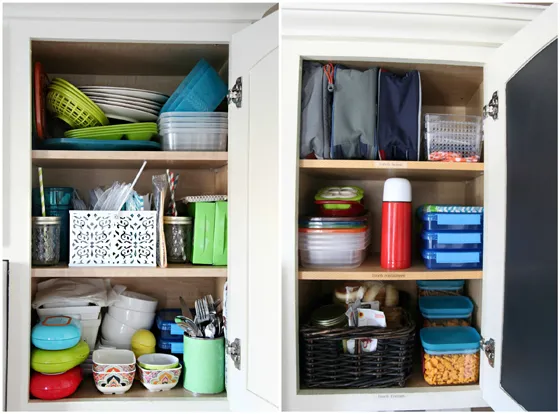
Become a Meal-On-the-Go Master
No more leisurely breakfasts and make-your-own lunches—when 7:00 am (or earlier!) on a school day rolls around, it’s a quick bite at the table and then out the door, lunch bag in hand. And that means getting organized. Stock up on healthy breakfast items, from whole grain toast and peanut butter to yogurt and berry parfaits, so your little ones can head out the door with a full stomach. For picky eaters, a high-protein cereal is a good compromise to sugary options, and for those who don’t want to eat at all, smoothies and protein shakes are quick and easy options.
When it comes to lunches, prepping the night before is your safest bet to avoid a hectic morning and a less-than-healthy brown bag. The tried and true sandwich can be kicked up a notch from banished peanut butter and jelly or tired, old deli meat. Start with whole grain breads, add healthy fillers like tuna, egg salad or turkey breast, and swap out mayo for spreads like hummus, guacamole or honey mustard. If your child is adventurous, think beyond the bread, with nutritious wraps, hardboiled eggs, quesadillas and more. Whatever you pack as the main course, accompany it with bite-size fruits and veggies for good measure. Just remember, whatever you pack, be sure to check the allergy list first to make sure you’re safe.
Prepare Freezer Meals
We’ve covered breakfast and lunch, but dinner is perhaps the most difficult meal of the day during the school year. Kids get home from school, you and your partner get home from work, and everyone is starving and about to be late for soccer or dance! Take the stress out of dinner and do a big freezer meal prep before the kids start school.
A quick search on Pinterest will give you a huge list of family-friendly recipes that will keep in your freezer for up to a few months. That way, on particularly busy nights, you can simply pull out a lasagna, casserole, or slow cooker dump meal and have your family fed in no time, with next to no effort. It’s more nutritious than the fast food you might be tempted to grab and will save money in the long run. If you feel overwhelmed by the thought of a full day of cooking, get some of your friends together and batch cook together, so everyone leaves with a freezer full of meals! It may seem like a lot of work ahead of time, but it’ll be worth it.
